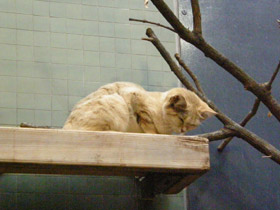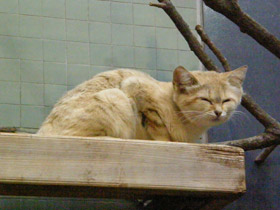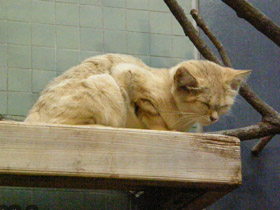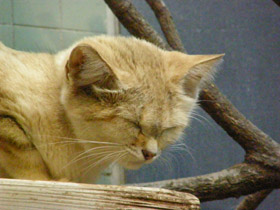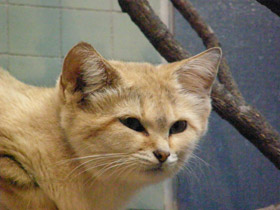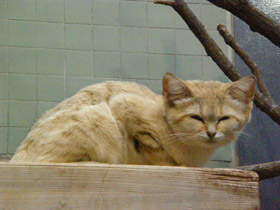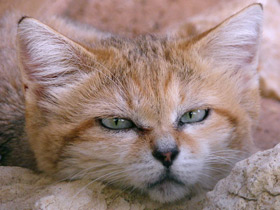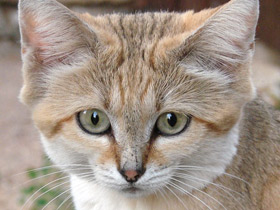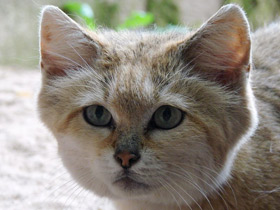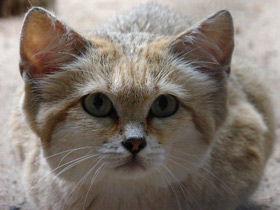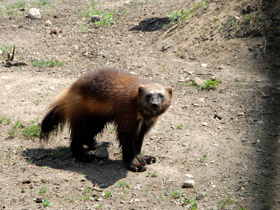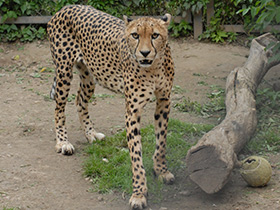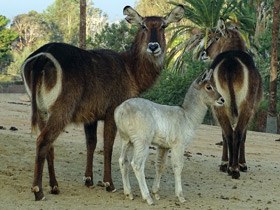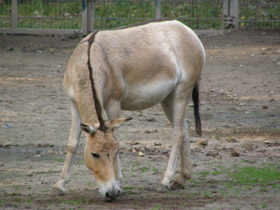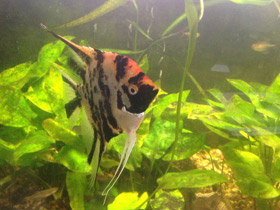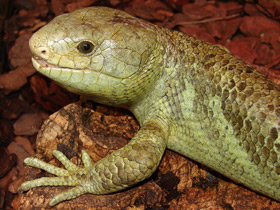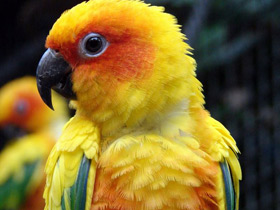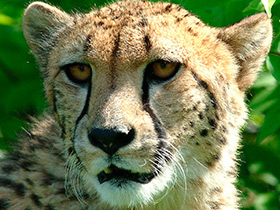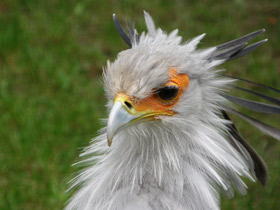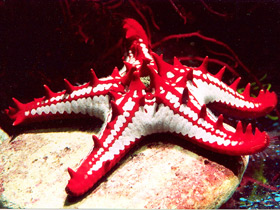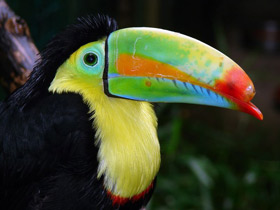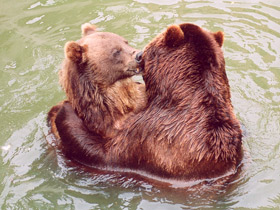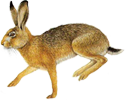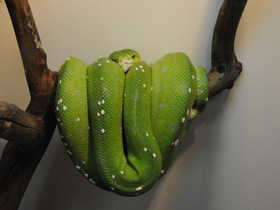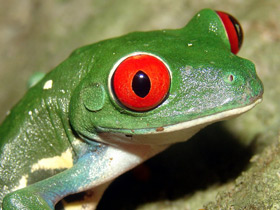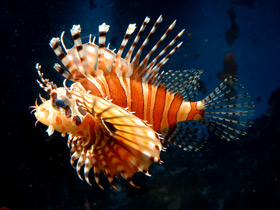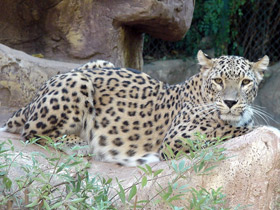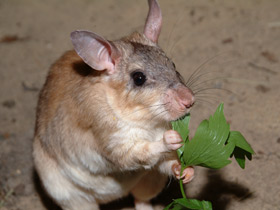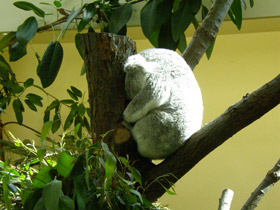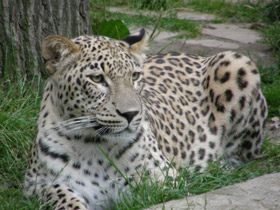The sand cat (Felis margarita)
Sand cat видео
Appearance
The sand cat (Felis margarita) is a small wild cat that inhabits sandy and stony deserts far from water sources.
Felis margarita is a species of carnivorous mammal in the family Felidae. It is the smallest member of the genus Felis along with the black-footed cat (Felis nigripes).
The Latin name Felis margarita does not come from its female name Marguerite, but from the name of the French explorer Margueritte, who first described this animal on the border of Algeria and Libya.
Felis margarita is notable for its smallest size among wild cats: its length is 65-90 cm (with 40% of the tail), its height at the withers rarely exceeds 30 cm and adult males weigh 2 to 3.5 kg.
The head of the Felis margarita is broad and slightly flattened, with sideburns; its ears are very large and broad, without tassels; the iris is yellow and the pupil is slit. It has short, strong legs, the feet of which are covered with stiff fur to protect them from burning in the hot sand. The barkhan cat's thick, soft fur prevents it from freezing on cold nights, and its condescending colouring makes it invisible against sand. In Central Asia, the Felis margarita grows a thicker, dull sand-coloured undercoat with a grey patina in winter.
Habitat and lifestyle
This small carnivore is found exclusively in the hot, arid regions of Central Asia, the Arabian Peninsula and the Sahara desert. Its habitat is highly variable, ranging from sandy deserts, almost devoid of vegetation, to stony, shrubby valleys.
Felis margarita is occasionally found in the sagebrush desert and on stony coastal ridges. They are strictly nocturnal; only the Pakistani subspecies is active mainly at dusk in winter and early spring. They flee the heat of the day by seeking refuge in old fox, courser, porcupine and enlarged mole and gerbil burrows. Sometimes they dig shallow burrows or holes, where they hide in case of danger.
Nutrition
Felis margarita feeds not only on small rodents (phlebotomine sandflies and gerbils), but also on nocturnal lizards and even venomous snakes; it also eats insects and spiders, sometimes catches hares and birds, and ravages their nests. Felis margarita gets most of its moisture from food, and can do without water for a long time. In search of food, the cat can survey an area of up to 8 square kilometres in one night.
Felis margarita does not usually bother humans, as it does not attack domestic animals, even during the cold season, when hunger drives all animals to gather near human dwellings.
This predator hunts mainly by waiting for prey from cover. Most of the time, the cat jumps out of ambush and grabs its prey by the neck, shaking it violently. It then tears at its prey with its teeth and claws and devours chunks of food.
If the hunt for a large animal is successful, Felis margarita may skip the following night and not leave its daytime hiding place. The "hunting grounds" of this small feline sometimes exceed 15 km2.
Reproduction
Gestation of the Felis margarita lasts 59 to 63 days and a litter usually contains 2 to 5 kittens (rarely up to 8). At two weeks of age they open their eyes and at five weeks they leave the den and begin to hunt as adults. At 6-8 months of age, young cats are relatively independent, although sexual maturity does not occur until 9-14 months of age.
Felis margarita is listed in Appendix II of the CITES Convention and zoologists believe that human activity is the main cause of its decline.
Taxonomy
Felis margarita was the scientific name proposed by Victor Loche in 1858 who first described a sand cat specimen found in the area of "Négonça" in the northern Algerian Sahara. This holotype specimen appears to have been lost. The species was named after the French General Jean Auguste Margueritte.
In the 20th century, the following zoological specimens of sand cats were described:
- Eremaelurus thinobius was proposed as a species by Sergey Ognev in 1926. The specimen had been collected in the eastern Karakum Desert in Turkmenistan. In 1938, Reginald Innes Pocock also considered it a species, but subordinated it to the genus Felis using the scientific name Felis thinobius. Later he considered it a sand cat subspecies, which to date is widely recognised.
- Felis margarita meinertzhageni proposed by Pocock in 1938 was a sand cat skin from the Algerian Sahara.
- Felis margarita aïrensis proposed by Pocock in 1938 was a female specimen collected in the Aïr Mountains in 1937.
- Felis margarita scheffeli proposed by German zoologist Helmut Hemmer in 1974 was described on the basis of seven sand cats that had been captured alive in Pakistan's Nushki desert.
- Felis margarita harrisoni proposed by Hemmer, Grubb and Groves in 1976 was described on the basis of a skin and skull of an adult male sand cat captured in 1967 in Umm al Samim, Oman.
In 1974, Felis margarita margarita, Felis margarita thinobia and Felis margarita scheffeli were temporarily recognized as valid taxa. At the time, it was considered possible that sand cats eventually recorded in Afghanistan and Iran might constitute distinct subspecies. In 2005, Felis margarita margarita, Felis margarita thinobia, Felis margarita scheffeli and Felis margarita harrisoni were recognised as valid taxa by W. Chris Wozencraft, who considered Felis margarita meinertzhageni and Felis margarita aïrensis synonyms of the nominate subspecies Felis margarita margarita. The Cat Classification Task Force of the Cat Specialist Group reviewed the existing information and in 2017 recognized only two subspecies based on morphological differences, namely:
- Felis margarita margarita, also called the Saharan sand cat, occurs in North Africa. It is smaller in size with brighter, more yellow fur, with more pronounced markings and 2–6 rings on the tail.
- Felis margarita thinobia, also called the Turkestan sand cat, Arabian sand cat, and Pakistan sand cat, it occurs in West and Central Asia. It is larger in size with less pronounced markings, a darker, more greyish coat, and only 2–3 rings on the tail.
Analysis of mitochondrial DNA of 47 individuals from across the sand cat's range showed that their haplotypes differed only by one to three base pair mutations. This low degree of genetic differentiation between the African and Asian sand cats indicates that the Sinai Peninsula may have been a barrier to gene flow.
Threats
Habitat degradation and loss of sand dunes due to human activities are considered major threats to sand cat populations in Western Asia, where uncontrolled hunting and persecution of predators using poisoned baits are common practices. The sand cat's small-mammal prey-base depends on having adequate vegetation, which may experience large fluctuations due to drought or declines due to desertification and loss of natural vegetation. Fencing of protected areas threatens the sand cat in Saudi Arabia, where several individuals were found stuck in fences. In Iran, vulnerable arid ecosystems are being rapidly degraded by human settlement and activity, especially livestock grazing. In Uzbekistan, drifting sand areas are increasing, as local people uproot shrubs for use as firewood and as a substrate for silk worm (Bombyx mori) cocoons.
In the Sahara, sand cats have been killed in traps laid out by inhabitants of oases targeting foxes and golden jackals (Canis aureus) or in retaliation for killing poultry. Several cases of sand cats having been killed by domestic dogs (Canis familiaris) were reported in Israel and Iran. In Israel, the sand cat was thought to be threatened by predation from caracals (Caracal caracal) and wolves (Canis lupus).
Sand cats have also been caught for the pet trade in the United Arab Emirates and in Iraq. In Baghdad, two sand cats were presented to a local nursery in 2012 that had been sold as pets; they died a week later. In 2014 and 2015, four sand cats were trapped alive by local truffle collectors and offered for sale in a wildlife market in Baghdad; their fate is unknown.
Sand cats may be at risk of transfer of diseases from domestic and feral cats encroaching on desert areas. In Saudi Arabia, one of 17 wild-caught sand cats was tested positive for feline leukaemia virus.
In captivity
Since the mid 1960s, sand cats were captured in Pakistan for trade and export to Europe until the Pakistani government ceased issuing permits in 1974. Captive sand cats are highly sensitive to respiratory diseases and infection of the upper respiratory tract. This is the main cause of death in adults. The most common disease is infectious rhinotracheitis. With sand cats being very susceptible to respiratory infections, they have to be kept in very arid enclosures, where humidity and temperature do not fluctuate.
The captive population kept in the European Endangered Species Programme is offspring of 18 founders that originated almost exclusively on the Arabian Peninsula. Until December 2009, the global captive population comprised 200 individuals in 45 institutions, including 23 European zoos with 102 individuals. The captive population within the Species Survival Plan for sand cat is based on eight founders.









